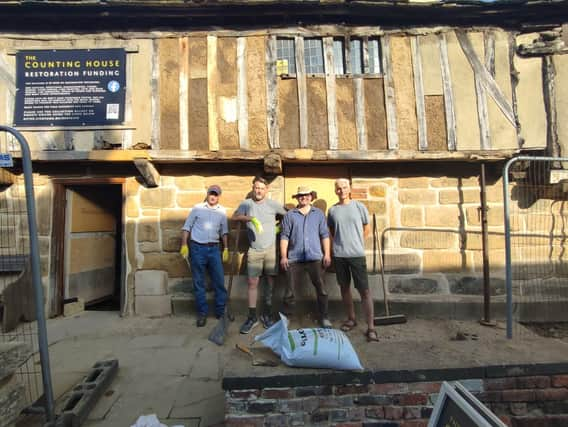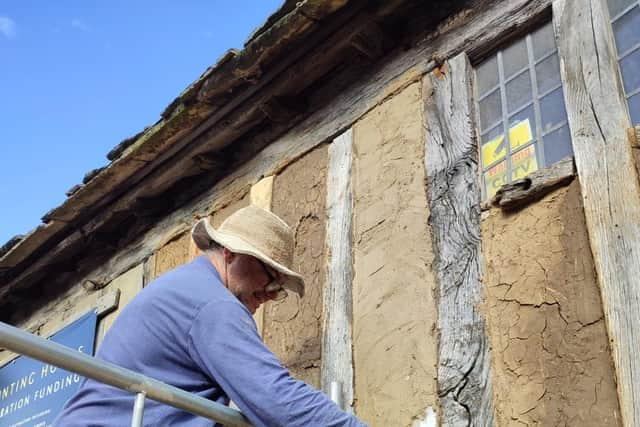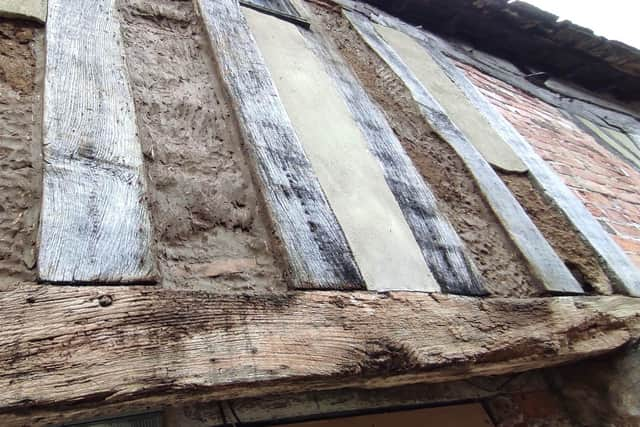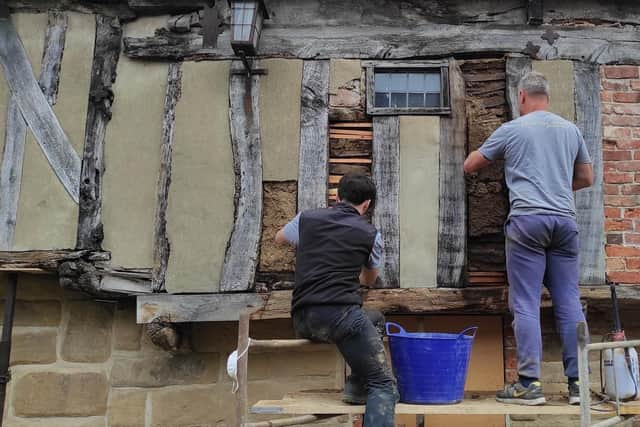Horse manure used to fill Pontefract’s historic Counting House walls in next stage of restoration


Work to restore the Counting House – one of the town’s oldest buildings – is at the next phase and an unusual concoction is helping to fill the rustic panels.
The daub that is being applied is made from clay loam, straw, goats’ hair and manure – supplied by Baghill Nursery – which is then turned into “mud pies”.
Advertisement
Hide AdAdvertisement
Hide AdGuy Lister has taken over the restoration of the building from his late father, Malcolm.


The Counting House dates to 1609 – four years after Guy Fawkes attempted to blow up the Houses of Parliament in the Gunpowder Plot.
Guy explained the manure doesn’t smell quite as bad as you might expect is, in effect, “fermented grass”.
The architect is being made redundant from his job at the end of the month, at what he said was an ideal time to focus fully on the restoraition.
Advertisement
Hide AdAdvertisement
Hide AdHe said: “I can't wait to start what might be a new job for me. Before it was lots of meetings and computers, and now I'm looking forward to the honest simple physical work of seeing that building recover herself in my father's memory.


"I am doing it for the both of us and I'm thankful for all the support the people of Pontefract are giving us.”
He said there had been a lot of help from local people. People donating to a bucket and online, and volunteering
Guy said: “We've had a great sense of community and there are so many people who have contributed.
Advertisement
Hide AdAdvertisement
Hide Ad"Another chap, who is retired, comes to help every Saturday, the lime pointing the walls. At the moment it is small scale, mostly friends and family volunteering.”


The straw used is from a farm in Worcestershire run by a man with dreadlocks down his knees known as the Dalai Farmer. He produces crops that can be used in conversation.
Originally a merchant’s ‘counting’ house, the building later subdivided into dwellings and spent nearly 30 years as a pub after Malcolm Lister bought and rescued it in the 1980s.
It closed as a pub in 2012 and has been vacant ever since.
Malcolm, an architect, was renowned for renovating old buildings and turning them into pubs and restaurants, and in the early 1990s the Counting House even won national awards for conservation.
Advertisement
Hide AdAdvertisement
Hide AdWhen he first set eyes on it, the distinctive timber frame was not even visible and the structure was covered in chicken wire.
Guy is now seeking tenants for the unique building, and is open to a variety of uses suggested by local people, from a heritage crafts centre to a liquorice museum.
Earlier this year a dendrochronology test, similar to how a tree would be aged, was used to determine when the Swales Yard building was completed.
A report by the experts who conducted the study said: “Prior to the tree-ring dating being undertaken it was thought that the Counting House might date to the sixteenth century or potentially be even earlier in origin and that it was the result of more than one phase of building construction."